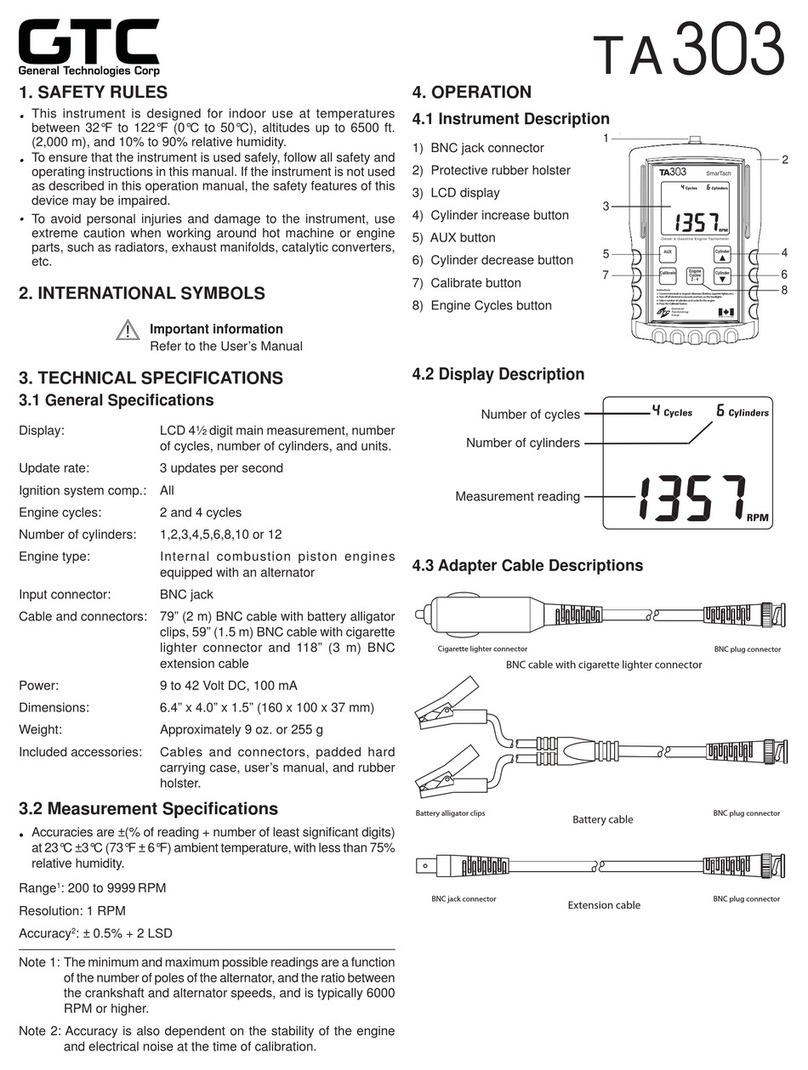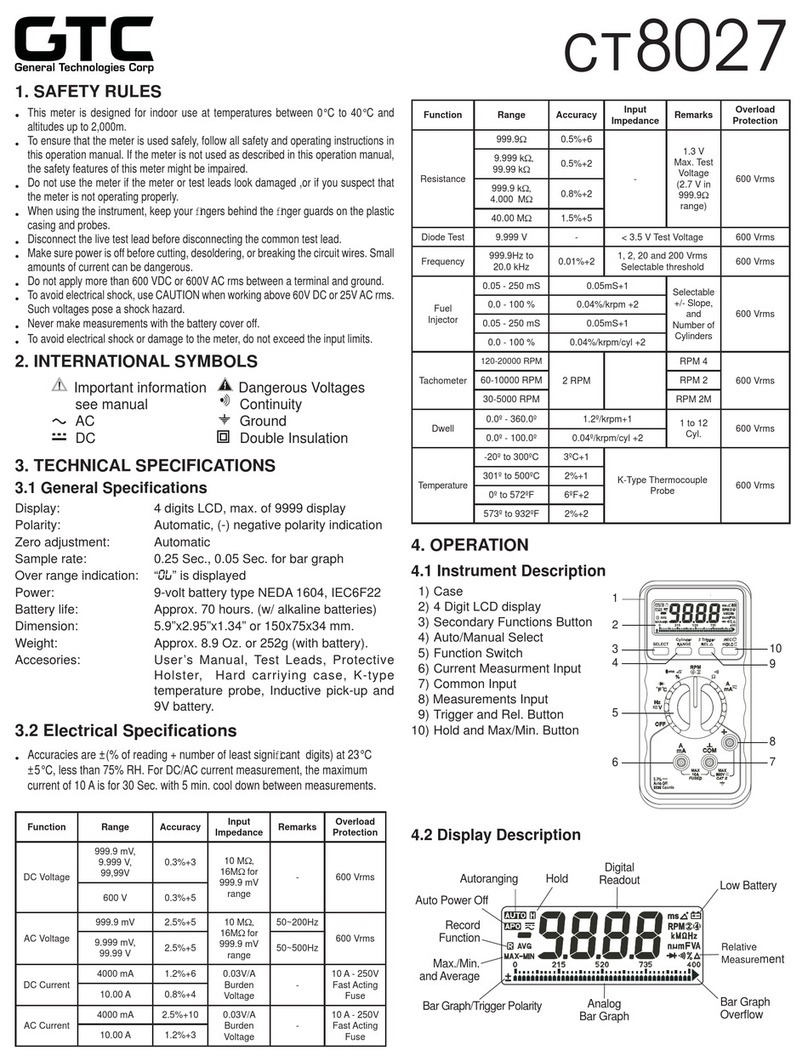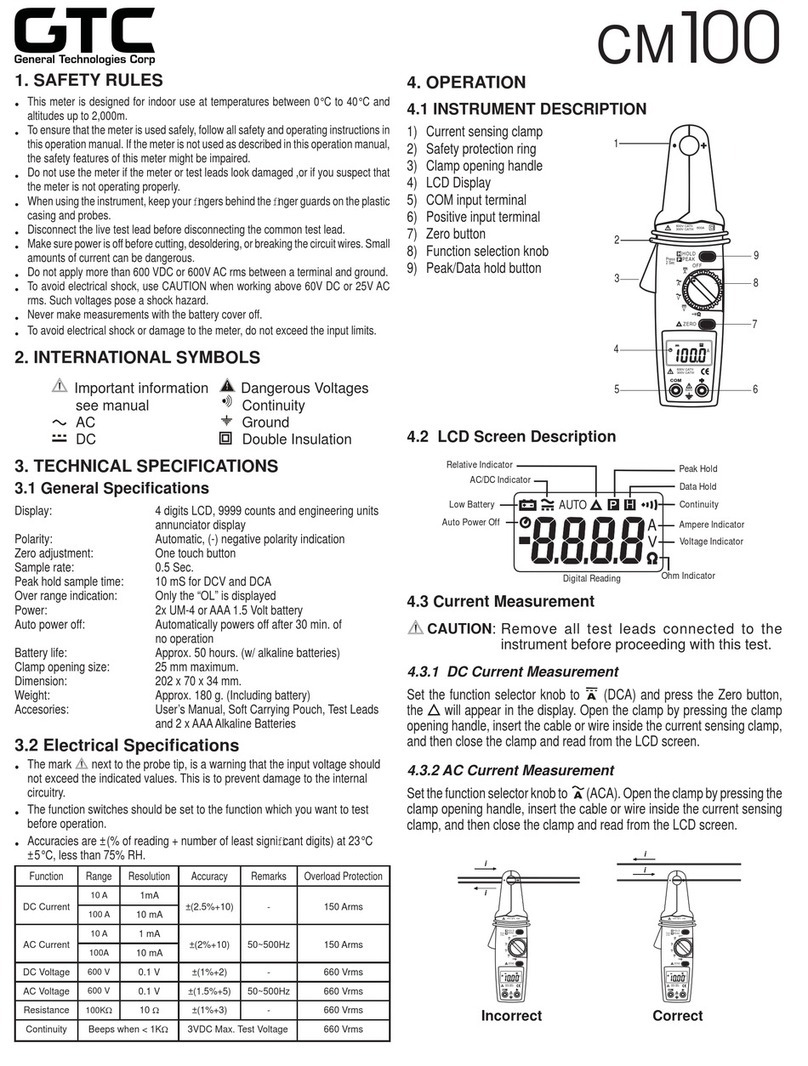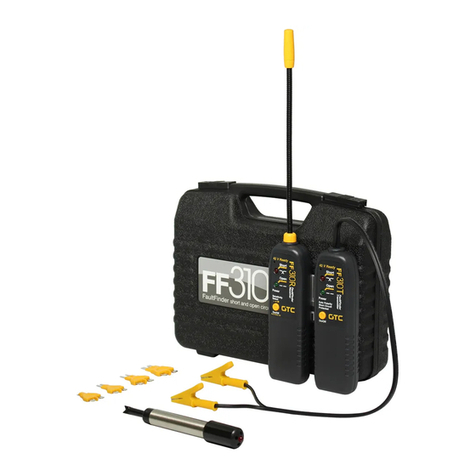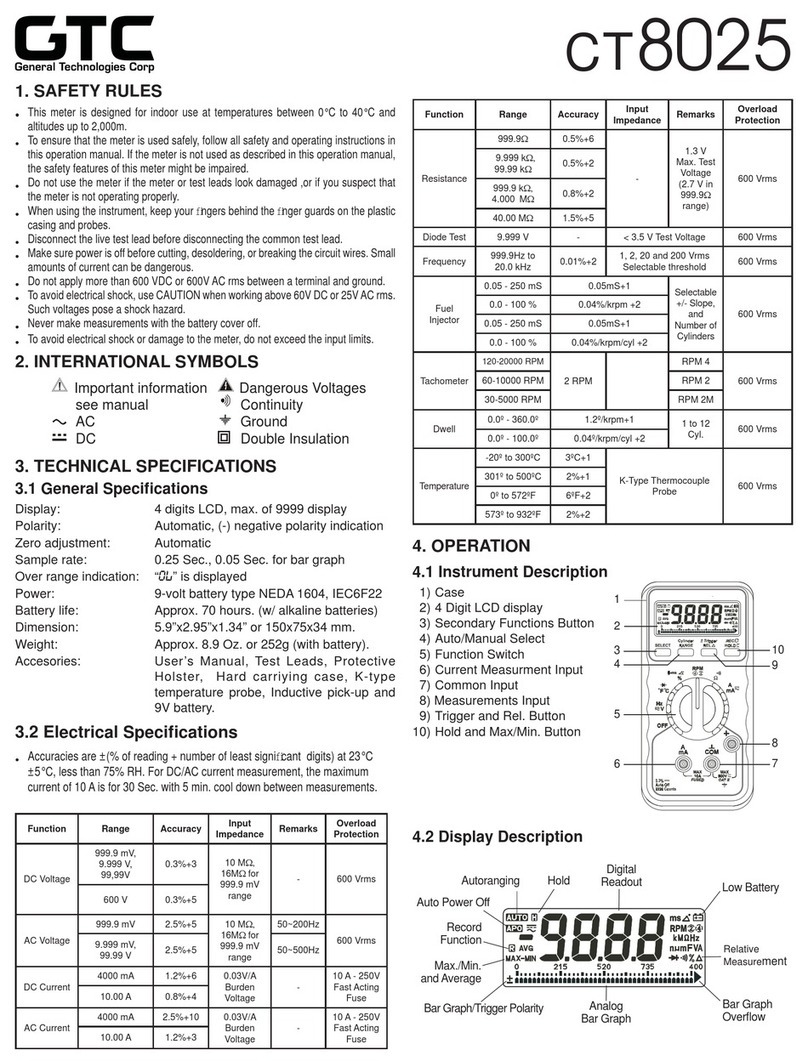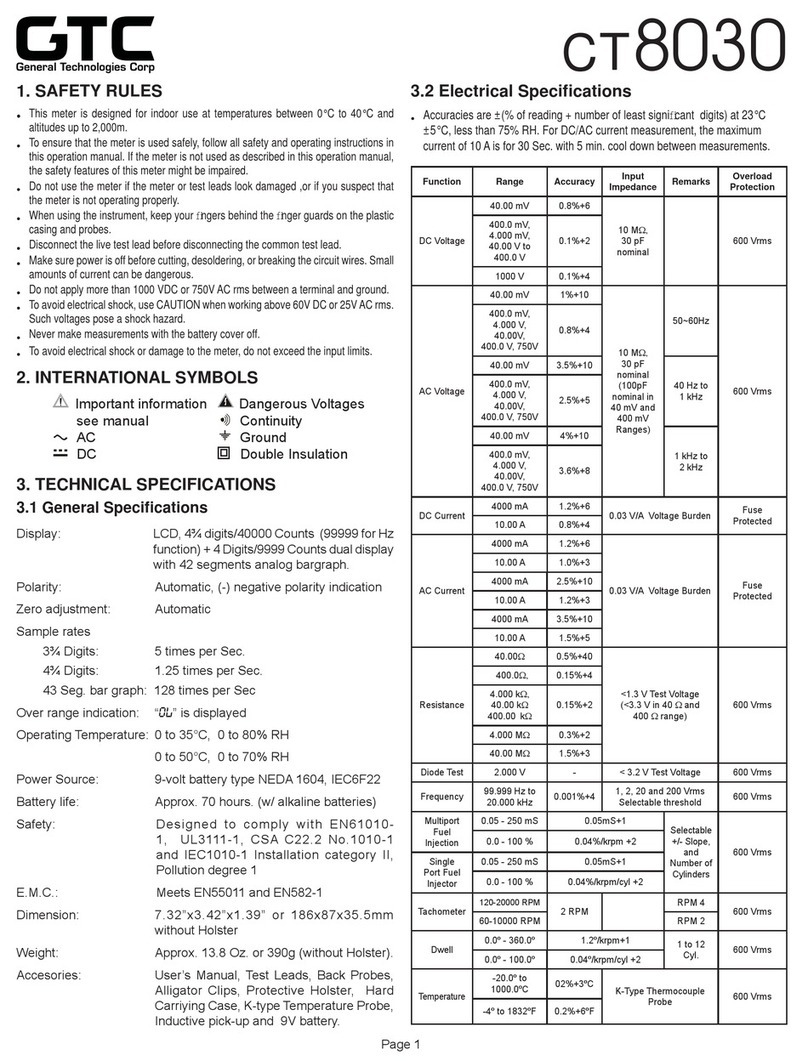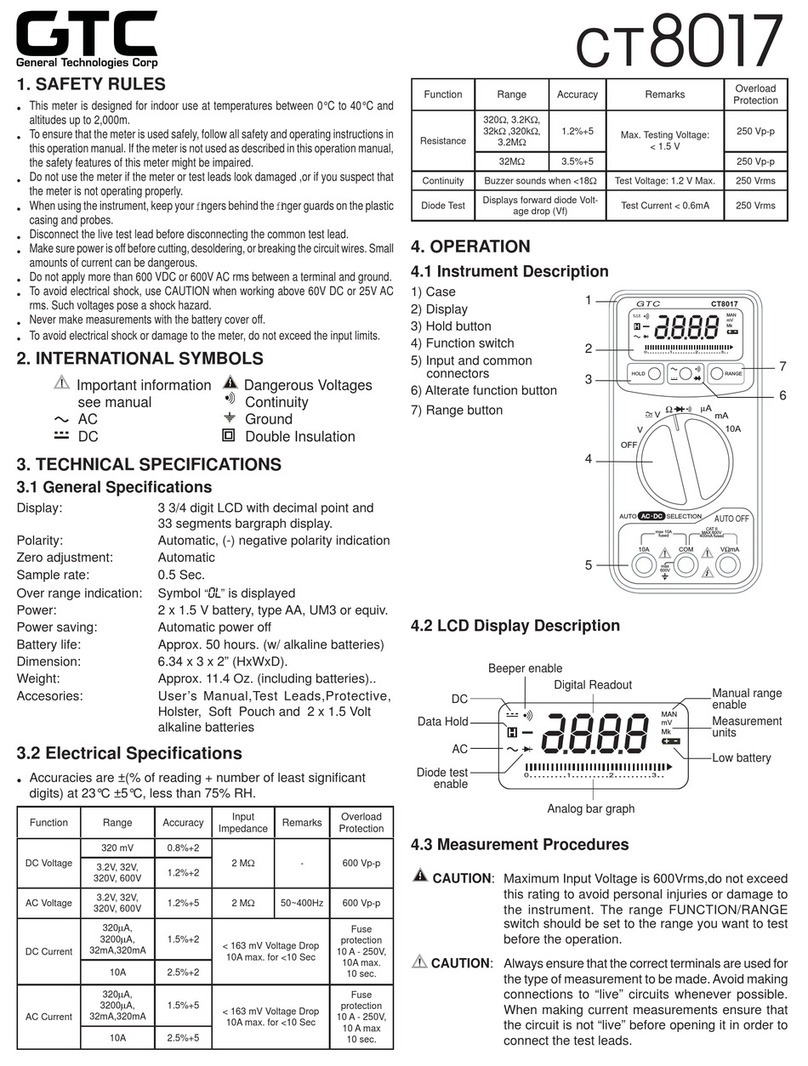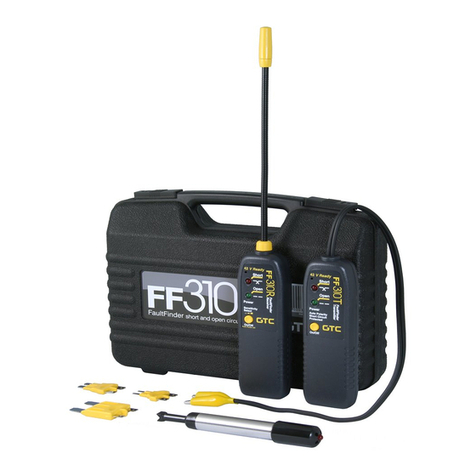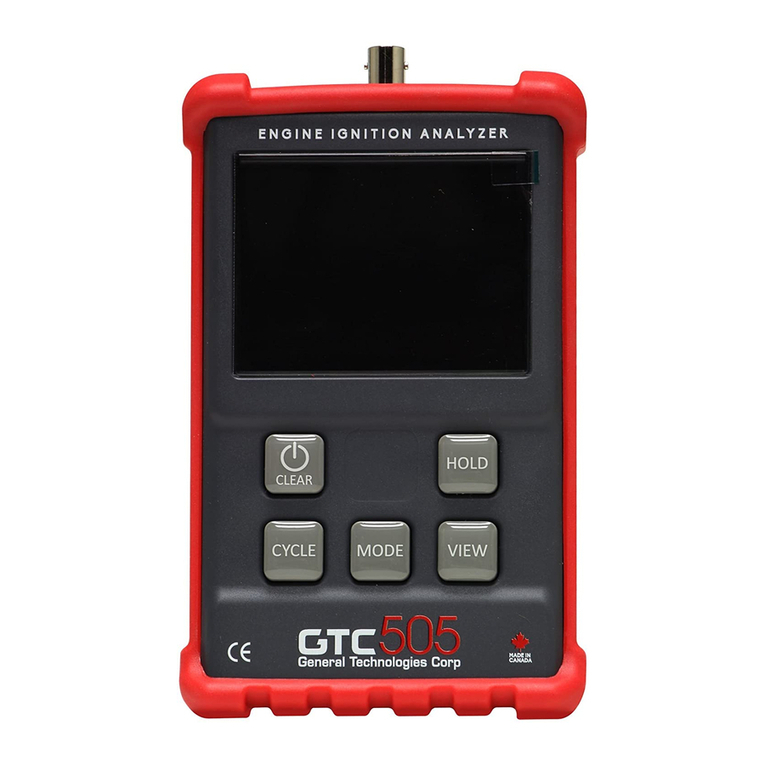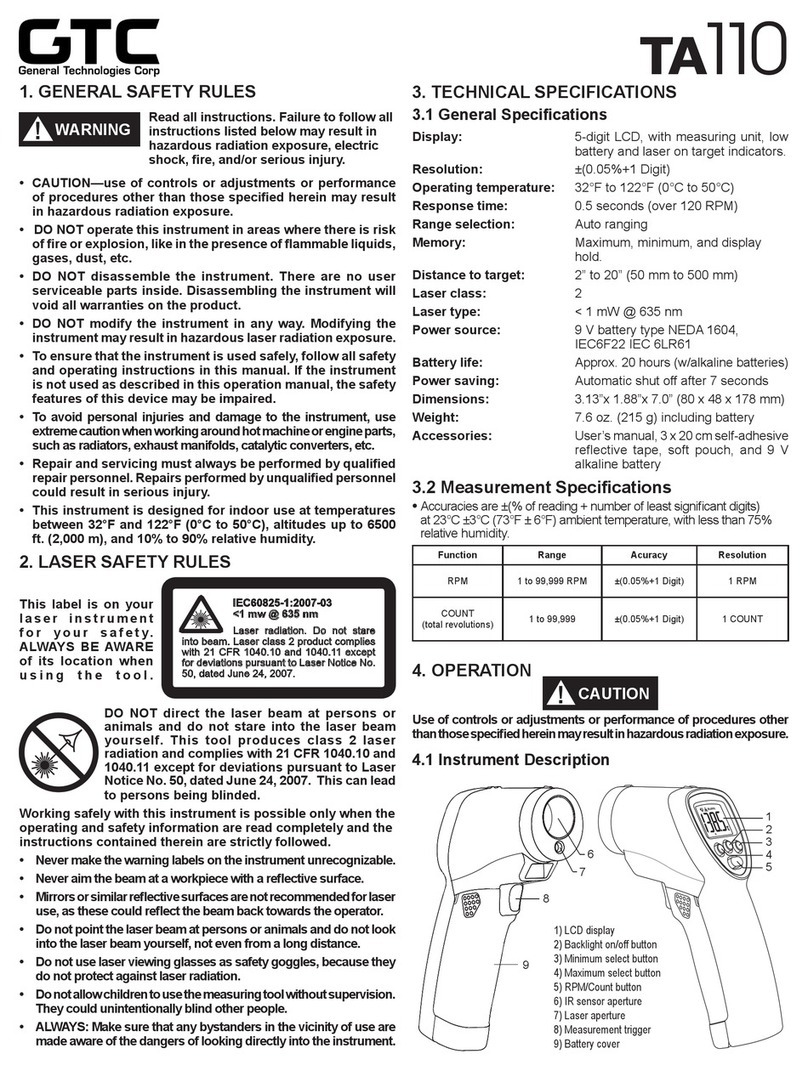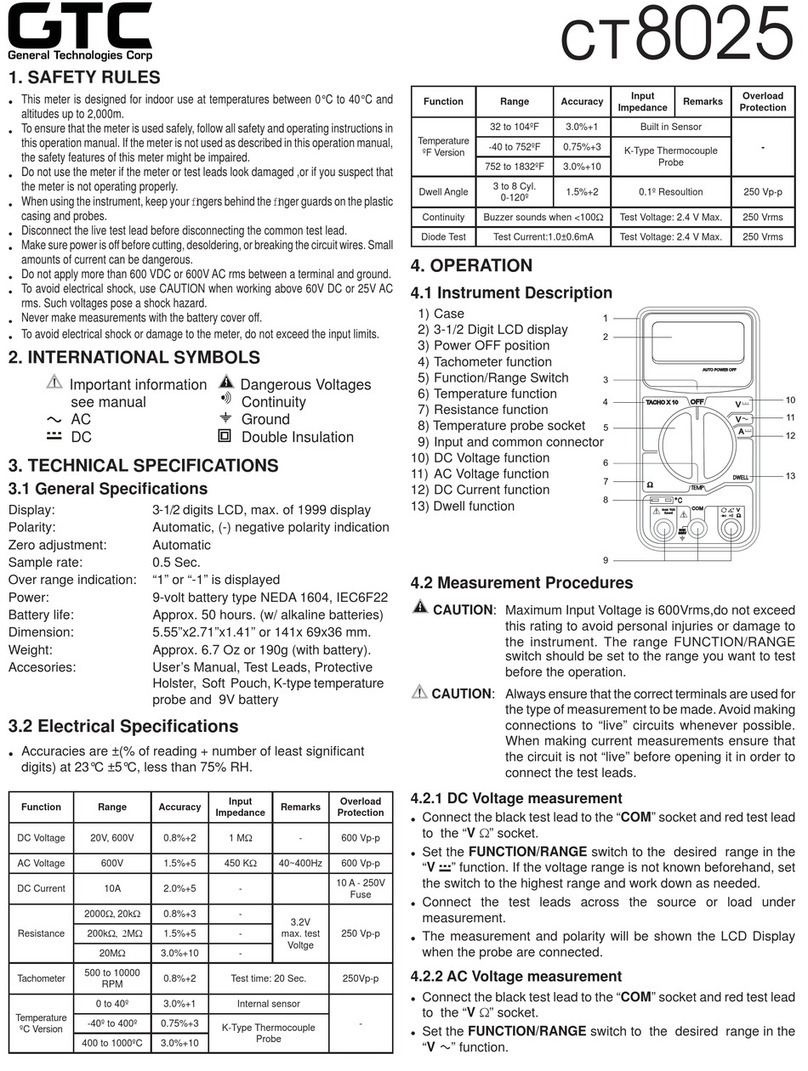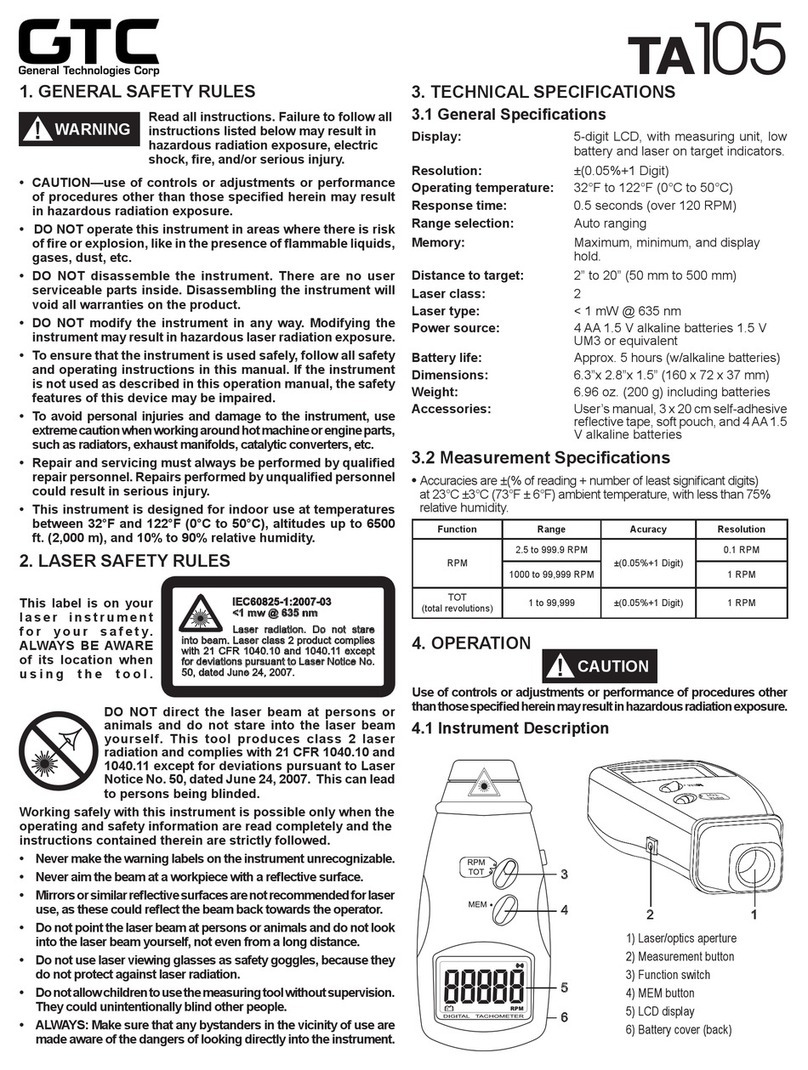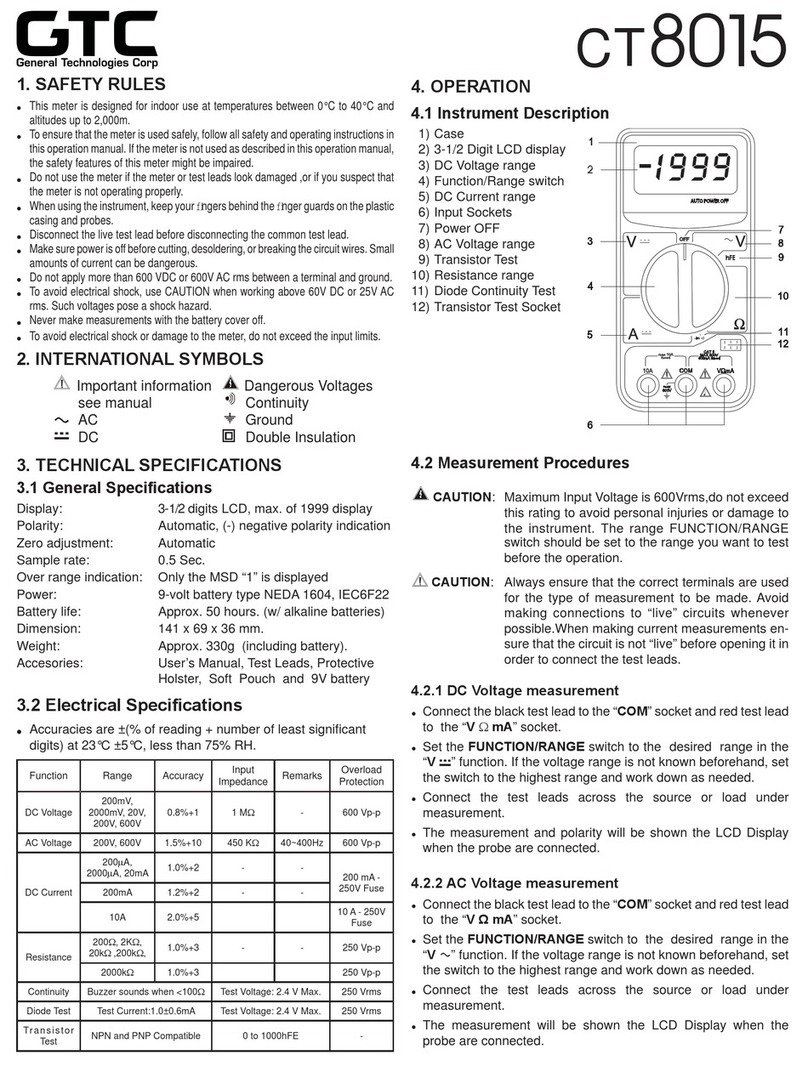Page 4
MIN - Minimum reading
• Holds and displays the minimum value of the measurements, with the last digit rounded
to ‘0’. The minimum value is automatically reset when turning the unit off or manually
by momentarily pressing the ‘Power On/Off / Reset’ button.
Cycles - Number of Cycles
• Displays the selected number of cycles: 2 and 4.
Measurement units
• Displays the measurement unit: RPM
Measurement reading
• Displays the measurement.
3.3 Buttons description and operation
3.3.1 Power ON/OFF and Reset
• When the instrument is OFF, to turn it ON press the ‘Power ON/OFF / Reset’
button until the unit turns on (in approximately 1 second).
• When the instrument is ON, to turn it OFF press and hold the ‘Power ON/OFF
/ Reset’ button until the display turns off (in approximately 3 seconds).
• When the instrument is ON, press momentarily the ‘Power ON/OFF / Reset’
button to reset the Maximum and Minimum values.
Note: To extend battery life, the TA300 will automatically turn off after 1 minute of being
idle (i.e. no button pressed and no input signal). Turning the unit off manually,
when not in use will prolong battery life.
3.3.2 Number of cycles
• Press the ‘Number of Cycles’ button to select the number of cycles for the
engine under measurement. Each time the button is pressed the number of
cycles will change between 2 cycles and 4 cycles. The selected setting will
show on the display.
3.3.3 Trigger Level Adjust
• Press and hold the ‘Trigger Level Adjust’ button to enable the trigger level
(threshold) adjust function. After this button is pressed, the display will show
the current trigger level (50% is the default setting), and the trigger level can
be adjusted by using the ‘Sensitivity Increase’ or ‘Sensitivity Decrease’ buttons
to increase or decrease it.
3.3.4 Sensitivity Increase and Decrease buttons
• The first time the ‘Sensitivity Increase’ button is pressed, the display will show
the sensitivity setting, and each time the button is pressed again it will increase
the signal sensitivity of the TA300. A few seconds after the button is released
the display will resume to show maximum and minimum readings.
• The first time the ‘Sensitivity Decrease’ button is pressed, the display will show
the sensitivity setting, each time the button is pressed again it will decrease the
signal sensitivity of the TA300. A few seconds after the button is released the
display will resume to show maximum and minimum readings.












